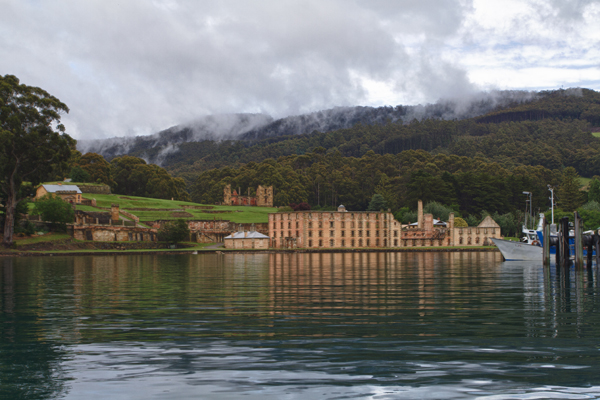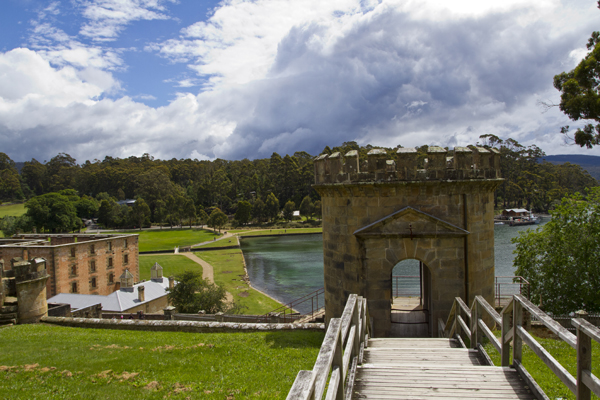It was cold and gloomy when we hopped aboard the Zodiacs taking us from the ship to Port Arthur. Appropriate weather for our visit to Tasmania’s infamous convict prison. This is the way arriving prisoners would have seen it. From the water. If you got sent here, you were in for it, mate. The system used here was concocted by a British sadist named Jeremy Bentham who described is as “a machine for grinding rogues into honest men.”
 I don’t know how many honest men emerged from the cramped, dank quarters of the prison. Not many, I reckon. The cogs of Bentham’s machine included discipline and punishment for the slightest offense. The cat-o’-nine-tails was a popular form of punishment but the biggest form of torture was psychological torture. The coffin-sized cells in an area called the Separate Prison were for “prisoners of bad character” who had hoods placed over their heads and were forbidden from talking. They were locked into these cells for 23 hours each day with just one hour a day allowed for exercise, alone, in a high-walled yard. Can you imagine? No wonder so many of the prisoners ended up going crazy. So much for reforming criminals into “honest men.”
I don’t know how many honest men emerged from the cramped, dank quarters of the prison. Not many, I reckon. The cogs of Bentham’s machine included discipline and punishment for the slightest offense. The cat-o’-nine-tails was a popular form of punishment but the biggest form of torture was psychological torture. The coffin-sized cells in an area called the Separate Prison were for “prisoners of bad character” who had hoods placed over their heads and were forbidden from talking. They were locked into these cells for 23 hours each day with just one hour a day allowed for exercise, alone, in a high-walled yard. Can you imagine? No wonder so many of the prisoners ended up going crazy. So much for reforming criminals into “honest men.”
I walked around the ruins of the prison and even sat in one of the brick-walled cells looking out at the harbor where whisps of low-lying clouds, like smoke, floated over the dark waters, trying to imagine what must have gone through the heads of the men who stared out at this same scene a hundred and fifty years ago. How hopeless you would feel.
After touring the prison, we were given the option of taking a boat to the nearby Isle of the Dead where some 1100 of the convicts (most of whom died from respiratory disease in this cold and dank spot) were buried, but I declined. It was just too sad.



Recent Comments